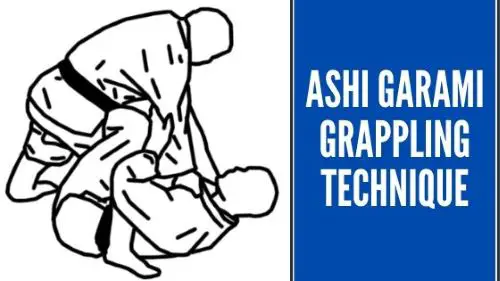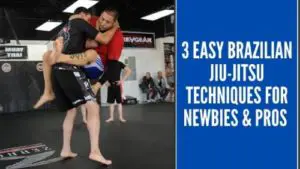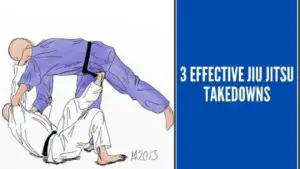Well, you have just started your judo classes. During this period, you realize that leg attacks are effortlessly the most electrifying yet tough grappling submissions. If you do not master this art, perhaps you could end up not being the best.
As the program unfolds, you feel like you should understand some of the most vital leg entanglement methods. In most cases, grappling will play a significant role in any fight and self-defense system.
Unless you understand the essence of timing when grappling, you will likely end up at the mercy of your opponent. But what would be the best grappling method for you? Undoubtedly, Ashi Garami will come out as not only dependable but also practical.
But hold up for a minute. What do you know about this method? The basics, right? But well, we should go beyond that. We take a comprehensive outlook at some of the factors that you should always have in mind.
What is the Ashi Garami Grappling Method?
Ashi Garami is a leg entanglement method that you can rely on during both Judo and BJJ. With this method, you will be in a better position to control and even subdue your opponent using multiple leg locks.
This technique usually comes in two different variations; outside and inside Ashi Garami. You could also call this inside Ashi Garami Standard Ashi or Ashi.
For the inside Ashi Garami, you will be in a position to control the leg of an opponent by wrapping your arm around it. Besides, you could rely on your outside leg to take control or hit their hip. However, this latter move could be illegal in competitive sporting.
On the other hand, outside Ashi Garami will focus on using your inside leg to keep the controlled leg in check. Besides, you will need to cross your legs, and firmly so, at the side of your assailant’s hip.
How to Perform the Ashi Garami Grappling Technique
- Step 1: Ensure that you understand the right entry position
With Ashi Garami, you will be sure of multiple entry positions that you could consider. Your choice will be dependent on both preferences and your current position. In most cases, you will find one competitor sitting down while the other is standing.
Whenever you are sitting, you will need to wrangle your leg around that of your competitor. Entry while on the floor will always give you an edge over your competitor. However, we still have various ways you could enter from the top.
Often, you could use the single X-guard approach in this pursuit. It will come in handy whenever you want to attack a straight foot lock. Here, the outer leg will keep pressing the hip while the inner one drives the knee or entire foot across the hip line.
It will always be essential for you to start from a relatively stronger foot. Perhaps such is the time to consider the Dela Riva Guard. This means that one of their legs will be exposed while one of your foot is on their hip.
If you want to go for outside Garami, it would be best for you to consider the 50/100 position. With this method, only one person will dominate the hipline of their competitor. Mostly, it allows you to attack one of their legs using all of yours.
- Step 2: Know where to place your foot
Usually, you will need the outside leg to maintain control over your competitor’s hip. It is through this that you will come up with a center point of pressure. This move will ensure that the assailant submits sooner.
Further, you will need to lower your center of gravity and perhaps squat on your left leg.
While at it, you should always have a firm grasp on where the locks are most likely to arise.
- Step 3: Move the inner underneath the far thigh
It is at this point that you will maintain control over your opponent. Ensure that you do not expose yourself to a heel hook counter in the long run. While at it, you need to keep your knees relatively tight.
Finally, for step 4, it will be time for you to attack, subdue, and accentuate your opponent’s submission.
When and how you should use this technique
Often, most people will rely on this technique whenever they want to subdue their opponents. But then, what is the right time for you to apply it?
In most cases, you will witness that this method will come in handier if you start from the ground. For as long as you are on the floor, you will stand a better chance of subduing your enemy.
Take your time to identify the right approach for you to wrangle up your opponent’s leg effectively. Then, you will have to push one of your feet at his hip. At this point, he is likely to wrap one of his hands around the ankle of their leg.
It is at this point that you will need to take a sweep and ensure your opponent goes down. This way, it will be easier for you to force them into submission, most likely through both leg entanglement and choking.
Related article: Brazilian Jiu-Jitsu: Overview & History
Advantages of Ashi Garami Grappling
Usually, this method of grappling will play a central role in ensuring that you subdue your enemy. It will give you both a competitive and strength advantage over the opponent, which is critical in saving your life altogether.
Further, it will play a central role in winning you a match. Such always happens when you are in a competitive game. It will make sure that the opponent is not only vulnerable but almost helpless in this situation.
Disadvantages of Ashi Garami
Mostly, people will associate outside Ashi Garami with various drawbacks despite having many perks. Usually, it could expose your foot to an opponent, and trapping you will not be a problem. If only they choose to apply an arm triangle finish, they will end up subduing you.
There are more effective takedowns moves like, The ‘Lapel throw’, The ‘Knee wheel’. If you’re interested, read this article on Top 3 Most Effective Jiu Jitsu Takedowns
In summary, there are times that you could find an aggressive and even more powerful opponent. If you are fast enough, Ashi Garami will always come in handy for you. It will play a central role in ensuring that you achieve submission much sooner.
Did you like our Ashi Garami Grappling Technique explanation? Let us know by sharing it your favorite social media.







